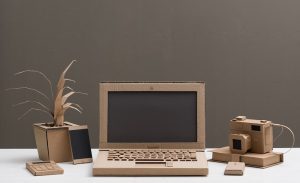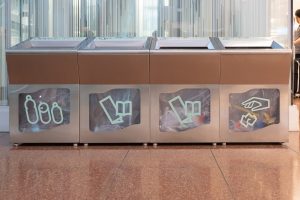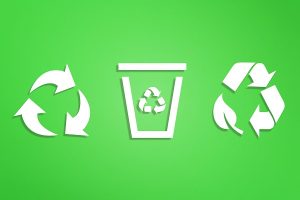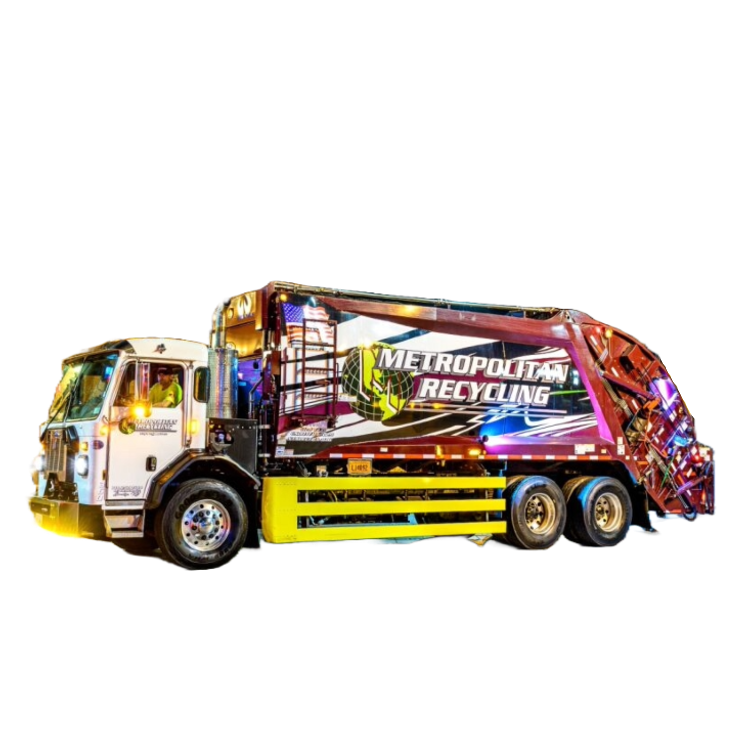Have you ever wondered how many items in your office are made from plastic? From the printer cartridges to computer keyboards and single-use cutlery – this material is all around your place of work. And that’s not all of it. Offices are furnished and equipped with products created from valuable resources like paper and metals. Add to those the electronics without which your job would be impossible and you end up with a place abundant with products that when not disposed of properly, create a hazard to our ecosystems.
What Happens to Used Office Supplies and Equipment?

What happens to all office materials and equipment that are no longer needed or used? In the best-case scenario, they’re recycled. In the worst? They end up in landfills and in our oceans, polluting the environment and threatening our own health.
Recycling in the office is an important topic that requires careful consideration and action. If you’re an employer looking to create a more sustainable and future-proofed business, or just an eco-minded individual looking to lessen their impact on the environment in all ways possible, these tips will help you out.
Let’s dive right in.
1. Set Your Recycling Goals

The first thing to kick start your office recycling journey is of course to set your goals. It might be overwhelming to establish exactly what you’re trying to achieve so a waste audit might help you clear that out.
Begin by analyzing what kinds of waste your office currently produces – categorizing each type of waste – paper, plastic, chemicals (e.g. toners in cartridges), electronics, and so on. Take a period of time as a benchmark and measure the amount of waste your office generates. Once you have that data, you’ll know where you need to focus your recycling efforts and what goals you target, and what actions you need to take first.
2. Create Recycling Policies & Offer Staff Training

Start small. If you’ve never implemented any recycling policies in your company before you’ll need time to figure everything out, so set realistic goals and work from there. You can start by focusing on a particular recyclable material each month. For example, you can organize a plastic-free month, providing information and alternative products to encourage people in the office to learn why they should reduce the use of the material.
You should also provide recycling bins and get in touch with a reliable waste management company that will help you with the transportation and recycling of the materials. Offering regular training on the importance of recycling and the impact human activities have on the environment will help you with your green-office goals. So would sharing weekly, monthly, or yearly recycling targets and if you’ve been able to achieve them.
A good idea would be to create a “green team” that helps you coordinate the recycling education and boost office recycling programs.
3. Organize Recycling & Resource-Saving Stations

Systemizing your recycling stations will help you make recycling easy. For example, you can set your recycling next to your office cafeteria, exits, and rinse stations, so employees can clean up reusable lunch boxes, or throw their paper, plastics, and glass directly in the recycling bins.
Recycling stations can also be used for other materials, like paper, small office supplies, and electronics. Those will remind staff that instead of throwing small stationery items like pens, highlighters, staplers, etc., they can recycle them. You can also assign a small recycling bin for each working space to help people get in the habit of recycling.
Additionally, you can replace big jugs of mineral water with a water filtering system. You’ll not only offset the pollution created during the transportation of the jugs but save on cost and storage space.
4. Set Reminders & Notifications

Once you’ve set your recycling goals and policies, set your recycling stations, and organized appropriate training for your employees, you should be ready to start your office recycling journey.
Sending out notifications and weekly, or monthly reminders will aid your recycling efforts. Share all related information on what this month’s goals are, and how far ahead you are in achieving the targets. Encourage people to participate, and ask for feedback. A quick company survey can give you some insights into what people think about your recycling efforts and where they can be improved. Your recycling bins may be at a very convenient place, or the processes around the recycling may be confusing and require more clarification.
5. Incentivize Recycling Reaching Goals

To be able to achieve office-wise recycling goals you’ll need the cooperation of everyone in your company. Showcasing your recycling goals and how close you are to achieving them might prompt employees to participate in reaching them, especially, when you measure everyone’s contribution. People are competitive in nature, so you might as well use it for the good of the planet.
You can also set a rewarding system, to further incentivize employees’ participation in the company’s recycling program. Turn your recycling into a fun challenge and reward the weekly winner with a shorter working day, for example.
To Wrap Up

Recycling is an amazing opportunity to help limit our carbon footprint and offset some of the harmful effects human activities have on the environment, including those in the office. More and more businesses are realizing that environmental issues are not something they can overlook, but rather incorporate solutions like recycling, to create sustainable places of work.
If you too are looking to transform your business and be part of a positive change in the world, recycling is a good place to start. These 5 steps will help you transform your office and company culture. They’ll help you contribute to creating a sustainable place of work for the future and help you be a positive example for others.

